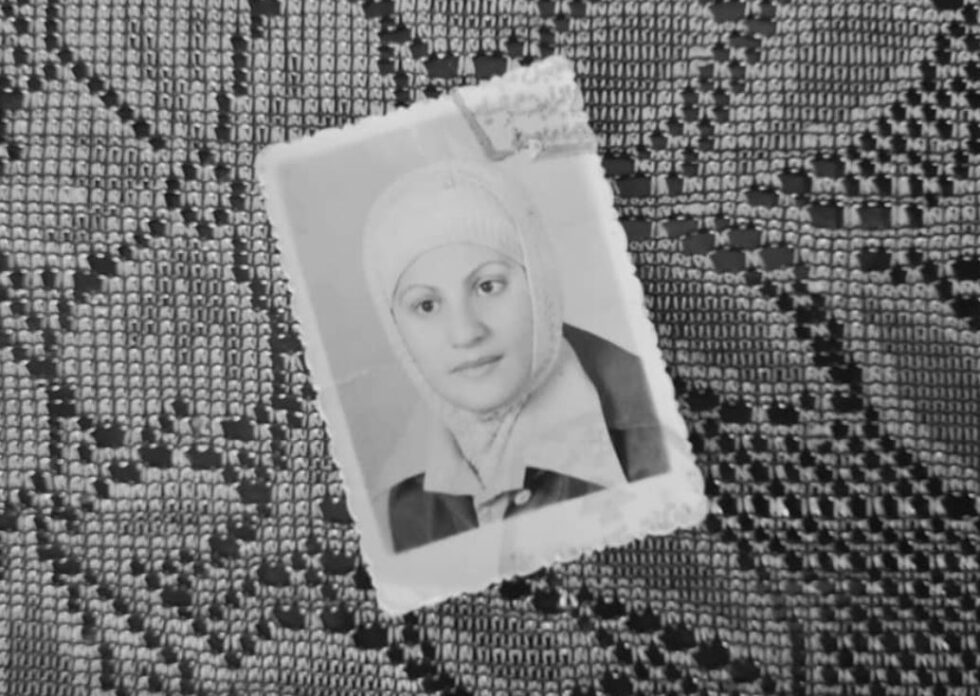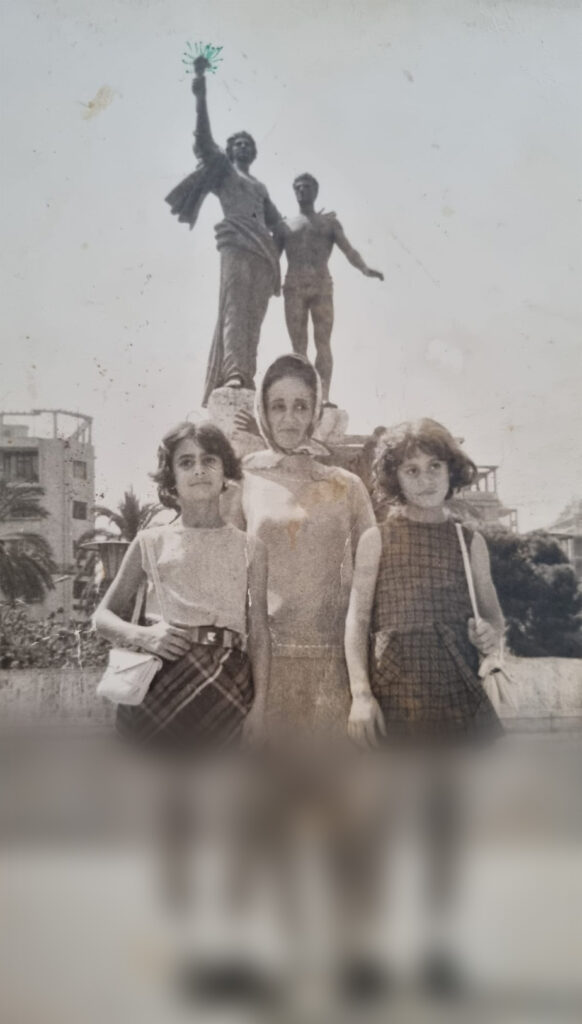A Near Death Experience: My Mother’s Hijab Story

It was the year 1977, at the start of the Lebanese civil war, when my mother experienced a battle that, unbeknownst to her, would serve as a guiding compass through the troubling roads ahead. She was born and bred in a region known as “the Dahieh,” the southern suburb of Lebanon’s capital city Beirut. The Dahieh of her upbringing was very much different to the Dahieh of today, which has been shaped by the 1979 Islamic revolution in Iran.
Prior to the revolution, the teachings of Islam weren’t widespread; scholars were few in number and were only consulted by people in matters pertaining to marriage/divorce.

My mother was fortunate to be raised in a family environment where, despite the limited knowledge and inconsistent practices, God was worshiped. The Prophets of God, the last messenger and his blessed progeny especially, were dear to their hearts. At the mere age of 14, she visited the Martyrs’ Cemetery after the last day of the school year. She stopped by a sea of people to witness the burial of two recently martyred men. She stood in awe watching the process– men dug the graves and lowered the bodies into them– she was mesmerized by the ritual. Suddenly, as she stood quietly, a large rock that seemed to have come out of nowhere struck her head. There was a custom that she was not aware of known as “تحية الشهيد” or “The Salutations of the Martyr,” during which bullets are shot into the air and rocks are thrown. It was seen as an expression of farewell, albeit, a dangerous one.
Her body froze and became flushed with heat as she collapsed on to the ground. Between when the rock struck her and when she lost consciousness, she managed to experience a brief moment of clarity that would become a catalyst for her new journey.
As she bled profusely, her mind raced to the scene she just witnessed – “is this it?” she wondered. "Am I really going to be buried like the two men I just watched? Is my life that insignificant to end so quickly? I’m so young, there’s still so much life to discover!"

She awoke to the pressure of a needle against her stitched scalp and her mother’s face with a pained look. She glanced over to the dress she was wearing when the rock had struck her – it was soaked in blood. Unfamiliar of her surroundings and uncertain about the severity of her condition, she clenched her fists tightly and prayed for God to keep her alive. She had hope that his limitless Grace and Mercy would see her through and give her a second chance at life. She was painfully aware of how little she knew about the afterlife.
She whispered to God under her breath:
“Extend my life so I can search for You”.
Moments later the doctor who was assessing her spoke to the nurse: “The injury is very deep, she’s fortunate to have survived.” In a whirlwind of emotions, my mother made an oath; she vowed to put on the hijab, an Islamic head covering, for 10 consecutive days in public. She didn’t know it was a religious obligation for Muslim girls once they reached the age of nine lunar years. With her limited knowledge, she thought donning it for 10 days was a generous way to give thanks.
My mother knew that a young girl wearing the hijab around the city would be a peculiar sight that would raise many eyebrows. The hijab was only ever traditionally worn by women who had either lost their hair due to old age or were losing hair due to a medical condition. It was a time when science and religion were not seen as compatible; those who were academically educated were not usually religious, and those who were religious were not perceived as educated.

After leaving the hospital, feeling immensely grateful for the blessings of health, time, and a newfound love for God, it dawned on her that the journey forward would not be easy. Question after question popped into her head – “Where will I buy a scarf that’s big enough?” Typically those that wore hijab wore it as a bandana.
“What will people think of me? Will my family and friends accept this change? Will I be able to cope with people’s unpleasant remarks?”
Slowly she began to sort through the barriers. She started by searching for fabrics at home, sewing them together to make something large enough to cover her properly. She wore what she made whenever she went out in public for the next 10 days.
When the last day of her promise arrived, she took a moment to really think about what she was doing. She asked herself if she should really be removing the hijab after God saved her life.

She vowed to understand why wearing hijab was seen as virtuous. She decided to keep the hijab on while seeking to understand the philosophy behind it. Throughout her search, she realized that hijab not only represents modesty, but liberation. It was a stance against objectification and sexualization of women.
She began to understand that Islam sought to elevate her status with modesty, and that the hijab is not merely a scarf, but a way to free oneself from societal expectations that instill low self-esteem, jealousy, narcissism, and many other vices. It was to free oneself from a society that was telling women that their worth was determined by their appearance. She no longer felt the need to conform to what the “norm” was perceived as at the expense of divine principles that sought to uplift the spirit of an individual.
My mother became steadfast in her decision to keep the hijab on despite the societal backlash she feared. She saw it as a covenant with the Lord of the universe and knew that she must make it unbreakable.
Those around my mother were insistent that it was a phase rather than a life decision. After the 10 days came and went, they realized they were mistaken.
Nevertheless, she was unapologetic, her confident and unrelenting demeanor eventually turned the resistance from family members into respect.

Her mother understood the significance it held in her daughter’s heart and traveled with her to a shop far beyond the suburbs to purchase a few new scarves. Meanwhile, the allowance my mother received at that time was saved up and spent on books about God, religion and philosophy; He was eager to strengthen her belief system.
Long after the acceptance of her family, her journey still was not easy. There were harsh glares from friends and strangers, and sometimes people would even tug at her hijab and taunt her about never finding a life partner.
Fortunately, she was unshaken by these attempts to rattle her resolve. With her purpose and ultimate destination at the forefront of her mind, she persisted in doing what she thought was best for the sake of her relationship with God.
A near-death experience was gifted to her, all so that she might find Him, the Beloved.
If you value our journalism…
TMJ News is committed to remaining an independent, reader-funded news platform. A small donation from our valuable readers like you keeps us running so that we can keep our reporting open to all! We’ve launched a fundraising campaign to raise the $10,000 we need to meet our publishing costs this year, and it’d mean the world to us if you’d make a monthly or one-time donation to help. If you value what we publish and agree that our world needs alternative voices like ours in the media, please give what you can today.







